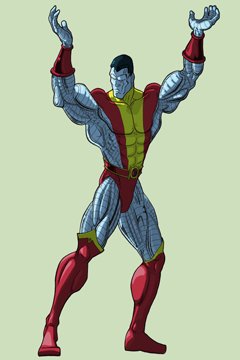
I've had this book sitting on my shelf for a little while now and it seemed to continually get bumped from my "next to read" list. I had heard some srange things about the author, everything from she fabricated most of the facts in the book to she commited suicide after writing it. I usually dispell rumors but I must admit when I started off reading this book I already had my back up (at least a little).
The book itself is an "account" of the Japanese invasion of the city of Nanking (Nanjing) on December 13th, 1937. The photos have been bandied about over the internet for year. While some have shown them to be false (or at least staged), others simply show the horrors of war.

My major problem with this book was the end noting style. For a book that makes SO MANY claims, it has the most awkward note system. The edition that I bought had end notes but no reference numbers. Grrrrrrrrrrrrr.
Here is an excerpt:
THE CHRONICLE OF humankind's cruelty is a long and sorry tale. But if it is true that even in such horror tales there are degrees of ruthlessness, then few atrocities can compare in intensity and scale to the rape of Nanking during World War II.
The broad details of the rape are, except among the Japanese, not in dispute. In November 1937, after their successful invasion of Shanghai, the Japanese launched a massive attack on the newly established capital of the Republic of China. When the city fell on December 13, 1937, Japanese soldiers began an orgy of cruelty seldom if ever matched in world history. Tens of thousands of young men were rounded up and herded to the outer areas of the city, where they were mowed down by machine guns, used for bayonet practice, or soaked with gasoline and burned alive. By the end of the massacre an estimated 260,000 to 350,000 Chinese had been killed. Between 20,000 and 80,000 Chinese women were raped--and many soldiers went beyond rape to disembowel women, slice off their breasts, nail them alive to walls. So brutal were the Japanese in Nanking that even the Nazis in the city were shocked. John Rabe, a German businessman who led the local Nazi party, joined other foreigners in working tirelessly to save the innocent from slaughter by creating a safety zone where some 250,000 civilians found shelter.
Yet the Rape of Nanking remains an obscure incident. Although the death toll exceeds the immediate number of deaths from the atomic bombings of Hiroshima and Nagasaki (140,000 and 70,000 respectively, by the end of 1945) and even the total civilian casualties for several European countries during the entire war (Great Britain lost 61,000 civilians, France 108,000, Belgium 101,000, and the Netherlands 242,000), the horrors
 of the Nanking massacre remain virtually unknown to people outside Asia. The Rape of Nanking did not penetrate the world consciousness in the same manner as the Jewish Holocaust or Hiroshima because the victims themselves remained silent. The custodian of the curtain of silence was politics. The People's Republic of China, Taiwan, and even the United States all contributed to the historical neglect of this event for reasons deeply rooted in the cold war. After the 1949 Communist revolution in China, neither the People's Republic of China nor Taiwan demanded wartime reparations from Japan (as Israel had from Germany) because the two governments were competing for Japanese trade and political recognition. And even the United States, faced with the threat of communism in the Soviet Union and mainland China, sought to ensure the friendship and loyalty of its former enemy Japan. In this manner, cold-war tensions permitted Japan to escape much of the intense critical examination that its wartime ally was forced to undergo.
of the Nanking massacre remain virtually unknown to people outside Asia. The Rape of Nanking did not penetrate the world consciousness in the same manner as the Jewish Holocaust or Hiroshima because the victims themselves remained silent. The custodian of the curtain of silence was politics. The People's Republic of China, Taiwan, and even the United States all contributed to the historical neglect of this event for reasons deeply rooted in the cold war. After the 1949 Communist revolution in China, neither the People's Republic of China nor Taiwan demanded wartime reparations from Japan (as Israel had from Germany) because the two governments were competing for Japanese trade and political recognition. And even the United States, faced with the threat of communism in the Soviet Union and mainland China, sought to ensure the friendship and loyalty of its former enemy Japan. In this manner, cold-war tensions permitted Japan to escape much of the intense critical examination that its wartime ally was forced to undergo.

No comments:
Post a Comment